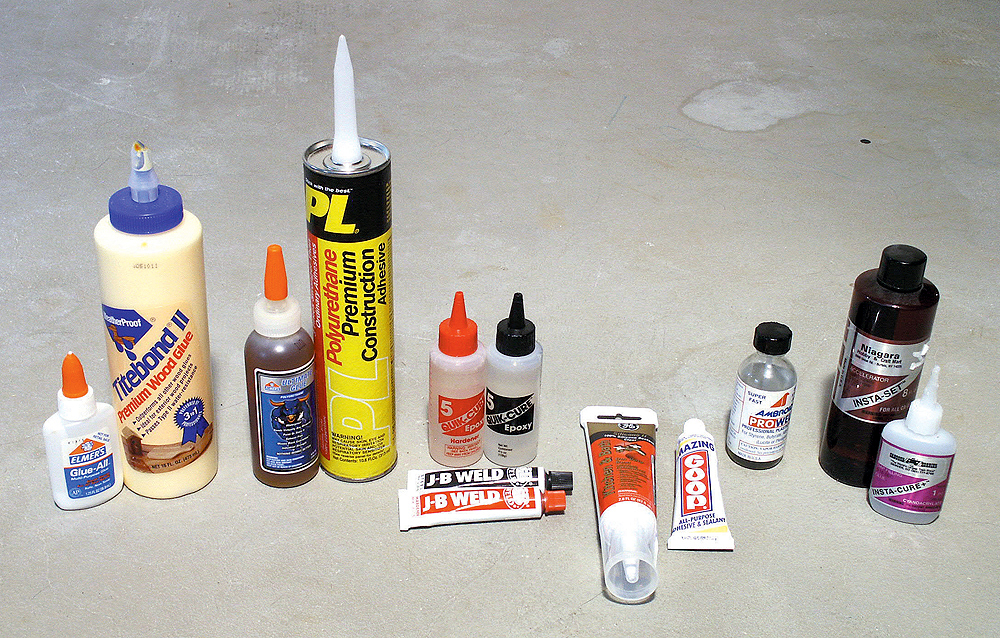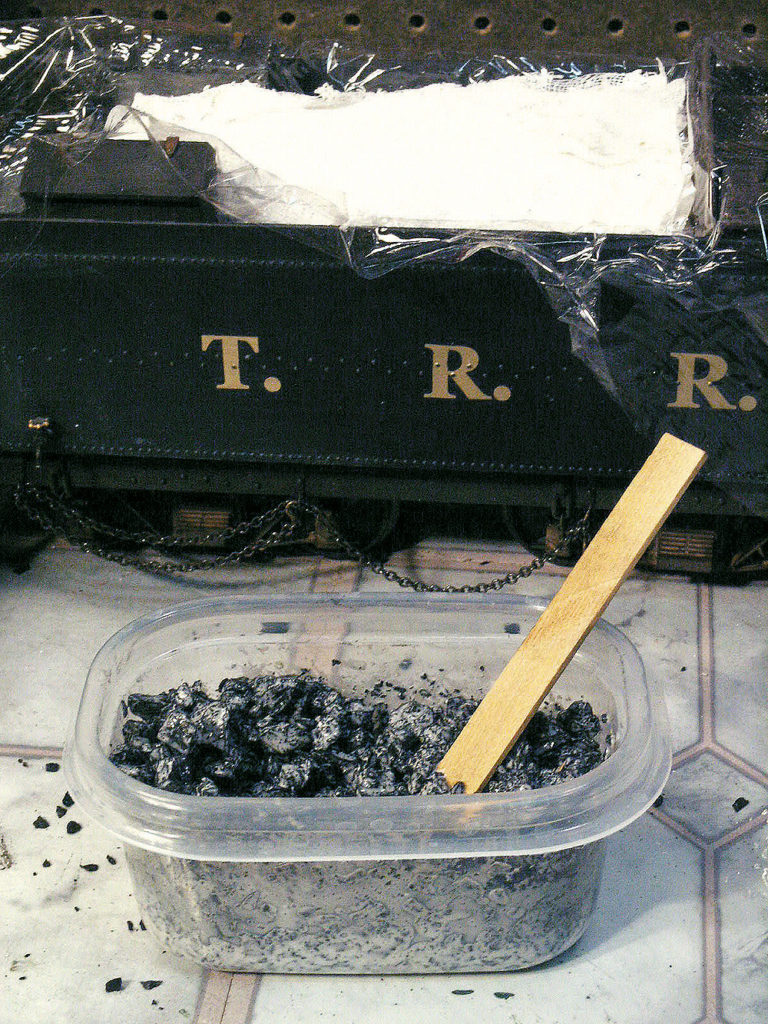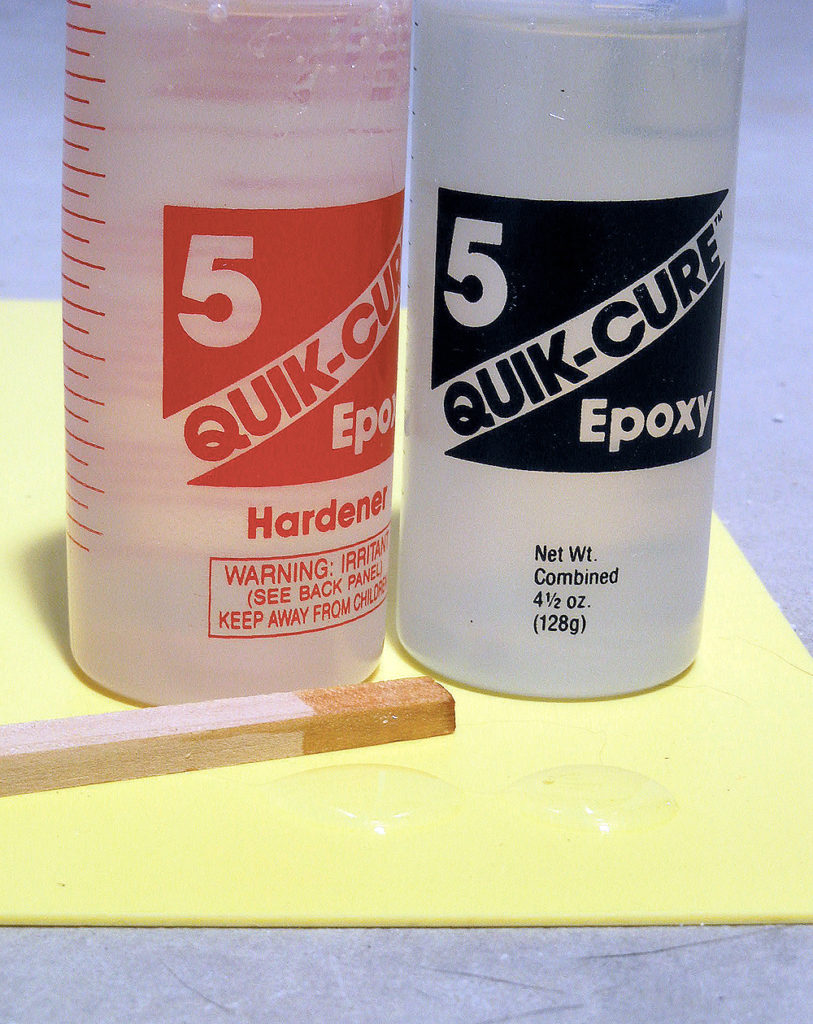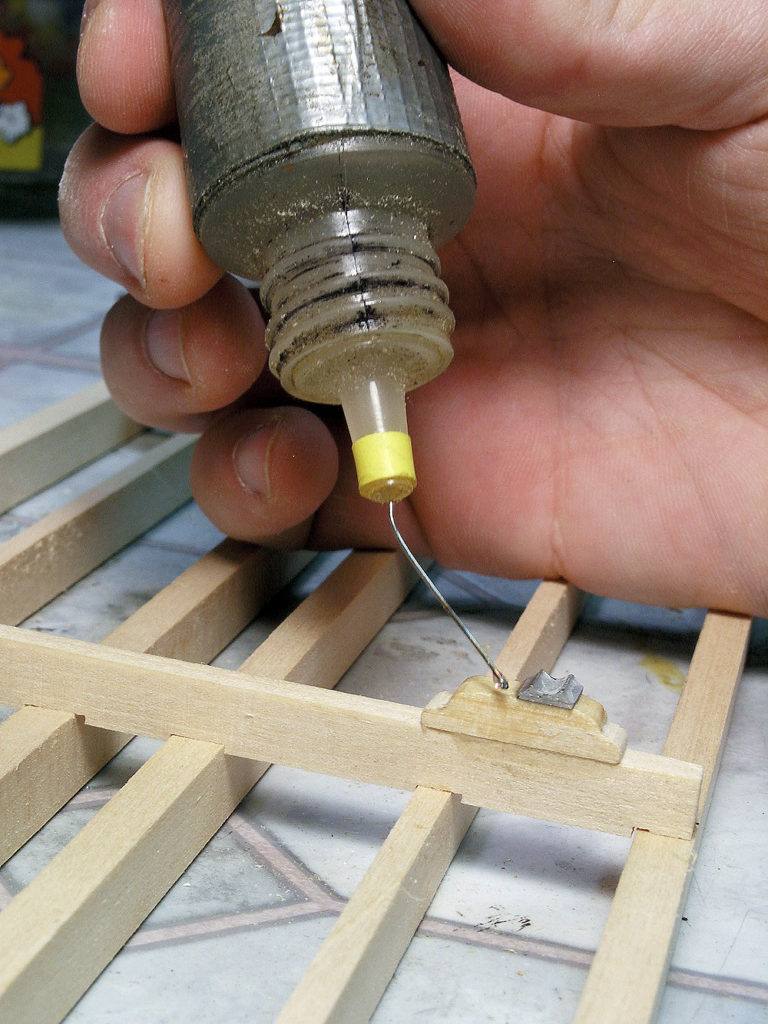
Glues and adhesives are among the first things you need when building a model — to hold it together! There are lots of adhesives, and they all do specific jobs depending on the material.

General-purpose adhesives
White glue — This is known as a PVA (polyvinyl acetate) glue. When it dries, it’s nearly transparent. Its widely available, dries fairly quickly and cleans up with soap and water.
Its best use is gluing porous surfaces together such as wood or paper. Note that joints made with PVA will lose strength and possibly come apart after exposure to moisture. That said, when the moisture is removed, the joint will re-set with no loss of strength.
Aliphatic resin glue — Commonly referred to as “yellow” or “carpenter’s” glue, it also works well on wood and paper. It stands up well to intermittent moisture and a structure built with it should stand up to rain or the sprinkler. These set up relatively quickly requiring minimal clamping time. Has an amber tint when dry.
Polyurethane glues — “Gorilla Glue” is one popular brand; Elmer’s and Titebond offer similar products. These are good for outdoor structures as they are waterproof. They also bond a variety of materials such as wood, plastic, metal, brick, stone, and glass. It’s commonly found as a liquid but is also available in a caulk-style tube. The cure time for these is one to four hours. Water is actually the catalyst for setting this glue; one surface should be moistened slightly. Cleanup requires mineral spirits.

Specialty adhesives
Silicone adhesive — Good for flexibility and gap filling. It comes in a variety of colors including clear. It’s waterproof and can be used in underwater situations such as ponds. There’s not much silicone adhesive won’t stick to. Available in caulk-style and smaller tubes.
Contact cement — Amazing Goop is one brand. It’s spread on each mating surface and allowed to dry for 2-10 minutes before joining. The bond is almost immediate. Full curing takes 24 to 72 hours depending on the materials being joined. Goop remains somewhat flexible and is waterproof. It should not be used around ponds, though, as it may harm aquatic life.
Two-part epoxy — Consists of resin and a hardener and bonds to a wide variety of surfaces. Epoxies are rigid once set and form a good bond between most common materials. They’re usually rated by cure time: two-minute, five-minute, and 30-minute. For high-temperature applications you can use JB Weld, an epoxy product infused with iron and steel particles. It has very high strength and withstands temperatures up to 600 degrees Fahrenheit.
Solvent cements — Also known as “model glue,” they work by dissolving a thin layer of the plastic on the surfaces being joined and “welding” them once the solvent evaporates. The end result is a joint as strong as the materials since they literally become one piece. The caveat with solvent cements is they don’t work on all plastics common to model railroading. Solvent cements also contain chemicals such as methyl ethyl ketone (MEK), toluene, xylene, or acetone and should be used in a well-ventilated area. Also try to avoid getting it on your skin.

Super glues
Cyanoacrylate (CA), sometimes referred to as “super glue,” should be on every workbench for quick repairs or light construction. It works well with wood and for gluing dissimilar materials, such as metal detail castings to wood. It dries almost instantly, allowing you to get more work done in a shorter amount of time. However, as it will dissolve when exposed to moisture over time, it’s not the best choice for building structures that stay outdoors.
CA comes come in various viscosities or thicknesses. The thin type is actually the strongest as it wicks best between surface joints. The thicker varieties allow more working time and can fill small gaps, especially when combined with baking soda.
Cyanoacrylate has a limited shelf life, so don’t get a big bottle unless you’re doing a lot of construction.
Accelerator spray is also available to instantly set CA. For better control, put it in a needle-tipped applicator bottle. The bottle should be opaque as light causes it to deteriorate. One solution is to wrap the bottle in duct tape and only put in small amounts at a time.
There’s no single, do-everything adhesive. Regardless of which kind of glue you use, follow the instructions on the bottle. Surfaces need to be clean, free from dust and oil. When in doubt, clamp your work to ensure that nothing moves.













